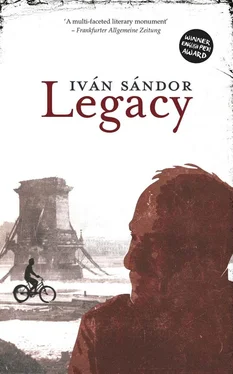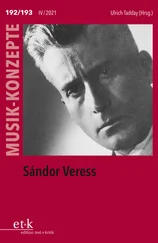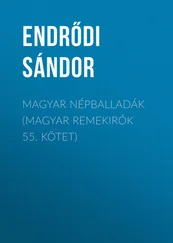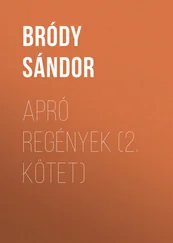The prisoners’ actual living quarters … inside the camp proper covers an area of approximately 500 by 300 metres, surrounded by a double row of concrete posts about 3 metres high, which are connected (both inside and outside) with one another by a dense netting of high-tension wires fixed into the posts by insulators. Between these two rows of posts, at intervals of 150 metres, there are 5-metre-high watchtowers equipped with machine guns and searchlights.
At 2.15 a.m. she reads:
Twice weekly, Mondays and Thursdays, the camp doctor indicated the number of prisoners who were to be gassed and then burned.
For ten minutes she attempts to add up the total of those who were to be gassed from the numbers of incoming transports that are detailed, and the number is so large that she is unable to cope with this, and around three o’clock she reads:
At the end of February 1943 a new modern crematorium and gassing plant was inaugurated at Birkenau. The gassing and burning of the bodies in the birch forest was discontinued, the whole job being taken over by the four specially built crematoria, with the ashes being used as before for fertilizer at the farm labour camp of Hermannsee.
A huge chimney rises from the furnace room around which are grouped nine furnaces, each having four openings. Each opening can take three normal corpses at once, and after an hour and a half the bodies are completely burned. This corresponds to a daily capacity of about 2,000 bodies. At the inauguration of the first crematorium prominent guests from Berlin were present. The ‘programme’ consisted of the gassing and burning of 8,000 Krakow Jews. The guests … were extremely satisfied with the results, and the special peephole fitted into the door of the gas chamber was in constant use. They were lavish in their praise of this newly erected installation.
While she is reading she becomes very conscious of the fact that, just a few months ago, 400,000 people from the country in the capital city of which she is now reading had come to this very fate; she reflects that those who were made to line up just a few metres away in the Óbuda Brickworks and who marched along the road through the hills of Buda had, in all certainty, met that same end. At around half past three she stops reading, tries to fasten the pages of the protocol together with the unusually large paper clip, puts it back in the file, during which process one sheet drops out — it so happens right on to the section of carpet that is slippery from vomit. She picks it up, carefully mops it with a handkerchief, closes the file, notices the still-full glass of cognac, reaches for it but does not raise it to her lips, although that had been the intention and does not understand why, if she wants a drink, the hand holding the glass does not move towards her lips and squeezes the glass so tightly that it breaks. So she hurls it at one of the pieces of furniture. After the noise has died away she does not dare turn round in case she were to come eye to eye with Carl Lutz.
One of the secretaries is standing in the doorway in her dressing-gown. Can I be of assistance, madam? she asks. No, it’s nothing, says Gertrud. But your hand is bleeding, says the secretary and takes her to the washbasin, washes the hand that was cut by the shards of glass and bandages it with gauze. Gertrud gives her a kiss on the cheek and sends her back to bed, clutches the file and enters the office that is now being used as a bedroom. She switches on the standard lamp. Carl Lutz is lying there with his eyes open. Gertrud can see that he sees her putting the file back on the small table. Like a corpse, the thought runs through her mind. She switches the lamp off, takes off her dressing-gown and puts on a nightdress on top of her underwear before snuggling up to Lutz under the shared blanket. She feels closer to the man than she has ever felt before. She would like to embrace him but suspects that he would not welcome that, even if he knew that she did not want to make love.
They awaken at half past six and make breakfast together in the bedsitter kitchen.
They do no talk.
They walk to the sleeping area together.
Gertrud puts the file that was left on the small table into the bottom drawer of Carl Lutz’s desk.

Mother shows me the shot in which Gizi can be seen in Mihály Munkácsy Street. She told me, Mother says, that another one was also taken of her, but she would give me this one because you are in it, too, there at the end of the row.
Also visible behind those who have lined up, on the loggia of the house opposite, is the woman who is biting into her roll.
The post brings two photographs with no letter enclosed and no sender’s name on the envelope.
In one of my truly old files I find a few lines about a time I visited Luca Wallesz in 1976, and there was a young girl there:
She hopes to be able to learn from me something about what happened to her family in 1944. According to Luca, my mother and grandmother were taken in together to the brickworks on the same day as her mother, to whom I apparently spoke, advising her to join the same line of people over sixty and under sixteen years old that I was standing in. According to Luca, a woman friend of the girl’s mother was also with them, and later the girl’s mother married the fiancé of the by-then-dead woman friend, but in the late fifties they had parted … I have forgotten the girl’s name, and anyway Luca asked me to keep it strictly confidential …
I had forgotten all about that note. The file had slipped behind the accumulation of other files and had become crumpled. It did not come to mind when that teacher had followed me, not even when she said that we had left Luca’s together.
Maybe I did have a tendency, let me put it like this, in the recesses of my self, to take refuge from things that Luca said, although I am certainly not the sort of person who wishes to endorse the wiping of memories.
I was always ashamed whenever anyone gave me to understand that they would like to forget certain events, while I assured them that I understood.
I was ashamed even when anyone gave me to understand that they were unable to free themselves of the memory of certain events, and I assured them that I understood.
The teacher speaks softly — not timidly or even cautiously. It’s rather as if her declarative sentences were to come out as interrogatives. I sense an edge of hopefulness in her voice, notwith standing the fact that her words seem to be building protective walls. She does not wish to let the person with whom she is talking get close to her yet she is ready to supply answers to inquisitive questions.
When did I feel that way about her voice? During that first encounter? When we got off the number 1 tram together?
Will it be possible for me, with the assistance of the voice that I conjure, to get to the roots of the story about which she would have liked to interrogate me?
I put Schubert’s String Quintet in C Major on the record-player.
Ever since I learned from Carl Lutz’s diary that he felt a sense of infinity in its sound I always listen to it when I reach a hairpin bend while working.
I place a telephone call to the Zsuzsa Kossuth Health Gym nasium and ask what the surname is of one of their teachers with a given name of Györgyi. I am put through to the head. I start by clari fying the reasons for my request. I make a note of the address in Abonyi Street, look up the telephone number in the phonebook then dial.
Is it she who picks up the receiver?
Do I hear a man’s voice?
At least it becomes clear she has a husband or partner; I am bound to admit that I am curious.
Читать дальше













